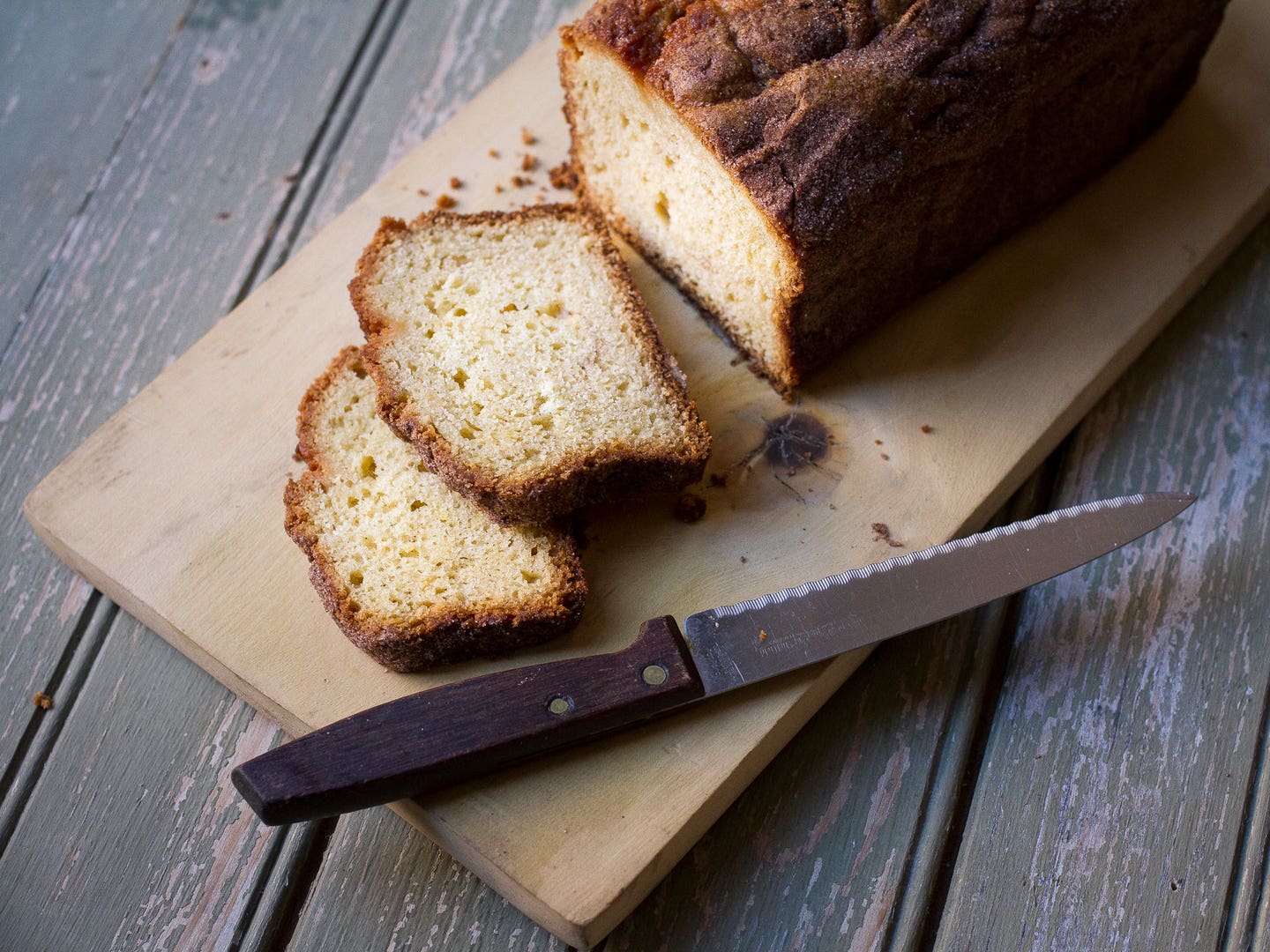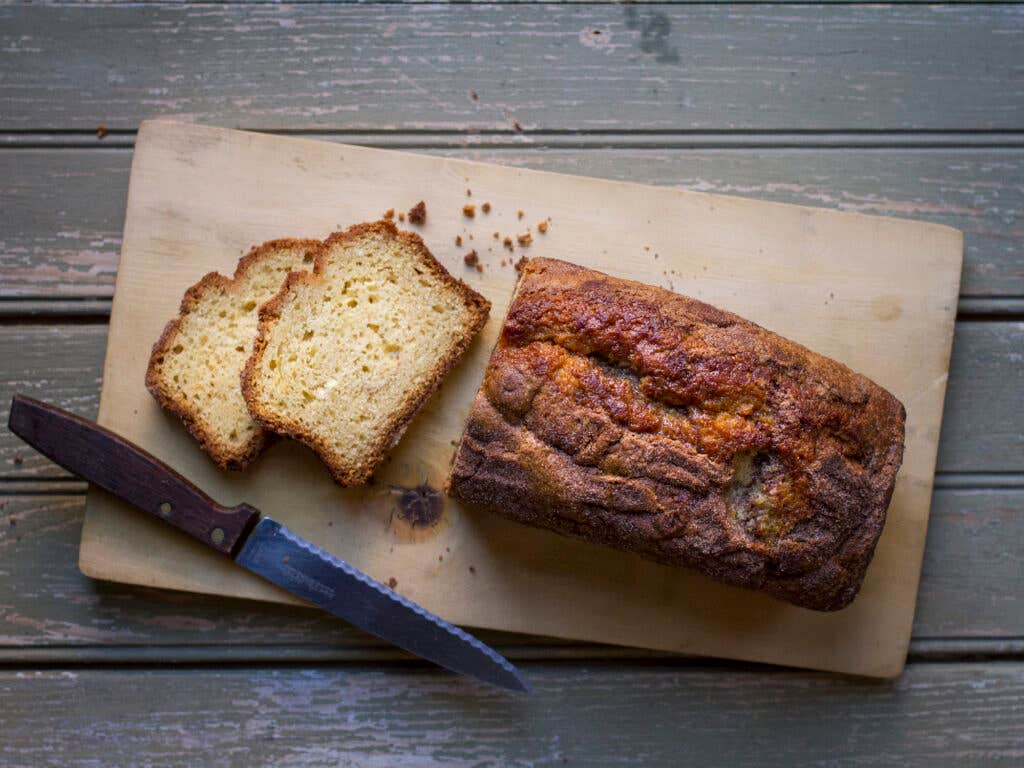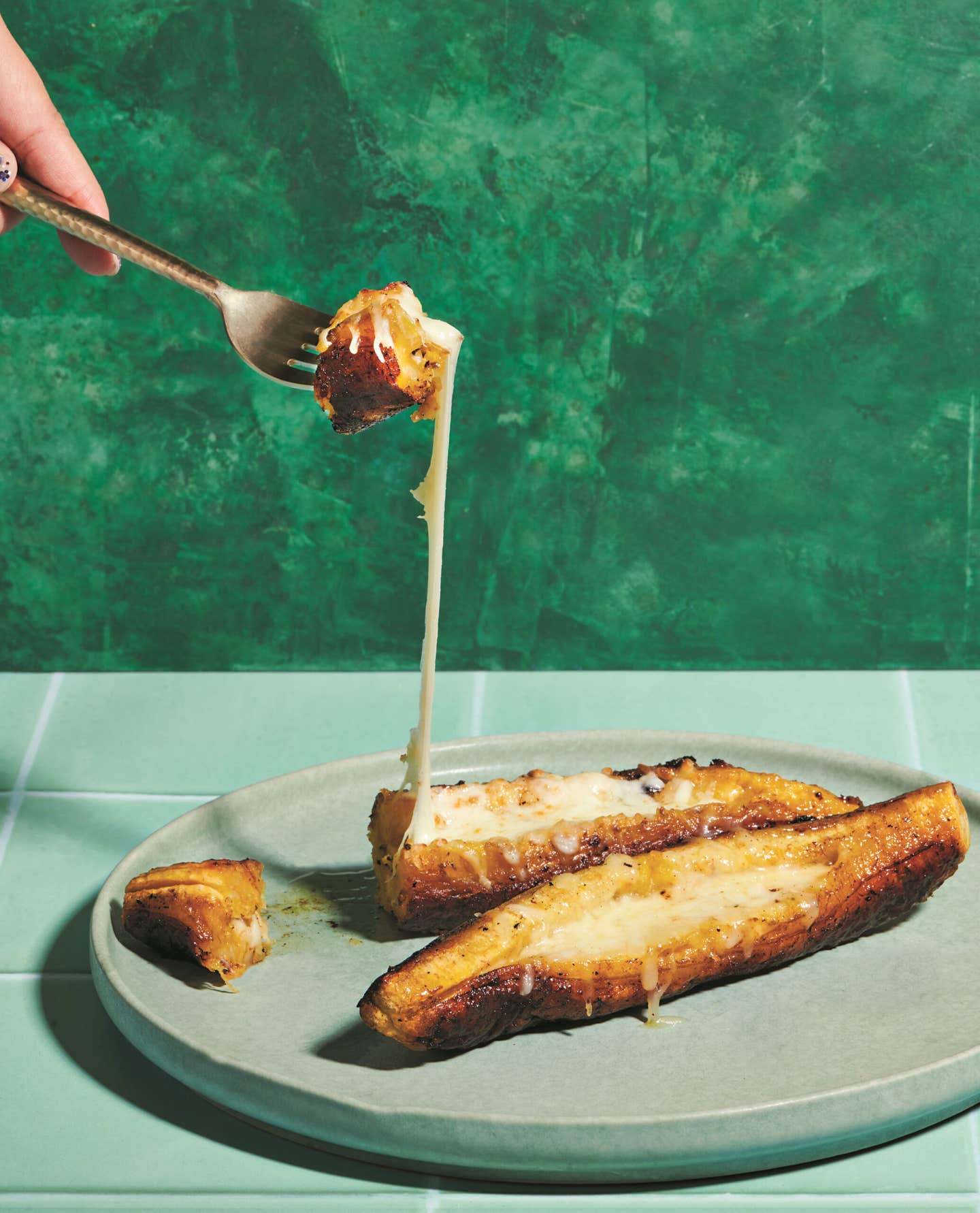
The Cake You Bake Every 10 Days
Making Amish friendship bread isn’t just a recipe—it’s a way of life
Call it an edible chain letter. The only way to make it is with a starter, given to you by someone who received it from someone else, and so on. When my mom’s friend gifted her a Ziploc bag of sugar, flour, and milk all those years ago, nobody could have guessed that the off-white mix would become a fixture on the kitchen counter for, well, ever: now 20 years and counting.
Every 10 days—that’s how often my mom would be in the kitchen, head bent over a bowl, wooden spoon in hand, baking Amish friendship bread. It’s called bread, but make no mistake, this is 100% cake, somewhere between pound cake and coffee cake, not too sweet and just the right level of dense.
To make Amish friendship bread, you have to follow some strict rules. Sometimes the starter must be left alone (days 1, 2, 4, 5, 7, and 9). Then you have to open the bag and mush it around (days 3, 8); and add additional cups each of flour, sugar, and milk, and stir with a wooden spoon (day 6, 10); and of course bake it (day 10), using one third of the starter and the recipe that comes with it. (The secret ingredient: vanilla instant pudding.) As for the remaining two-thirds of starter: One you save for yourself to bake again, one you pass on to friend who will (you hope) carry on the tradition. Needless to say, my mom stopped giving it away years ago.
Since it happened so often, baking day was not a sacred event, but I always looked forward to it. I developed a sixth sense for knowing when the cake was cooling on the stove, my cue to sneak into the kitchen and break off a piece of the crunchy, craggily top. Even as an adult who lives more than 2,000 miles away, this act of rebellion still brings me joy when I’m lucky enough to be home on day 10.
So when and where did this tradition begin? And is it even Amish? I’ve wondered for years, and finally went in search of some answers. The short version: Nobody really, truly knows. Calls to multiple Mennonite bakeries in Lancaster Country, Pennsylvania, turned up nothing. Kevin Williams, the editor of a syndicated news column called the Amish Cook, has visited settlements from Montana to Maine and has yet to come across anyone who makes it.

“The recipe is the bane of my existence, actually,” he says. “My conclusion is that like many things about the Amish, it’s been assigned to them by pop culture. They’re known for their bread-baking skills, so their version was probably just sourdough bread.”
The Boston-based chef Marc Sheehan reached a similar conclusion while researching old recipes for his restaurant Loyal Nine, where the menu focuses on fermentation and reinterpreting colonial-era dishes. But he takes it one step further: "A common story I heard is that sourdough bread and a small amount of starter would be given to someone in the community who was sick or struggling in any way—it was an offering, a way to help your neighbor," he says.
Darien Gee, a writer who lives in Hawaii, was the most passionate Amish friendship bread fan I came across. She was so taken with it that it inspired her to write the novel aptly named Friendship Bread. Gee has built a community of bakers on Friendship Bread Kitchen, which has become a library for recipes that can be made with the starter, including biscotti and oatmeal-cranberry cookies. Gee believes that the tradition evokes the spirit of the Amish, sharing what you have with others. "And, even though it has milk, you don't refrigerate the starter, which also connects to the Amish, who live without electricity," she says.
I realized it doesn’t really matter to me where or how it started. What matters are the lessons that have come with it. This single cake has taught me what it means to commit yourself to something—especially something that most people wouldn’t give the time of day, let alone a never-ending 10-day cycle. My mom is so dedicated to Amish friendship bread that she enlists a “babysitter” to tend to the starter whenever she is out of town. Sure, part of it is compulsion (this is a woman whose floors are clean enough to eat off of), but a bigger part is the desire to constantly bring a little bit of sweetness into people’s lives, whether it’s the handy man or the hospital volunteers she works with or her daughter when she comes home for a visit.
Two tinfoil-wrapped loaves are always the last things that go into my suitcase before heading for the airport. Just knowing I’ll have them in my own freezer provides a certain level of comfort. At any time, I can have a bite and just like that, I’m home.
Learn more about making your own friendship bread on Amish Friendship Kitchen.
Brooke Porter Katz is a Senior Editor at Martha Stewart Weddings and the former Travel and Food editor at Travel + Leisure. Follow her on Twitter @brookeporter1 and Instagram @brooke_porter1.
Keep Reading
Continue to Next Story










